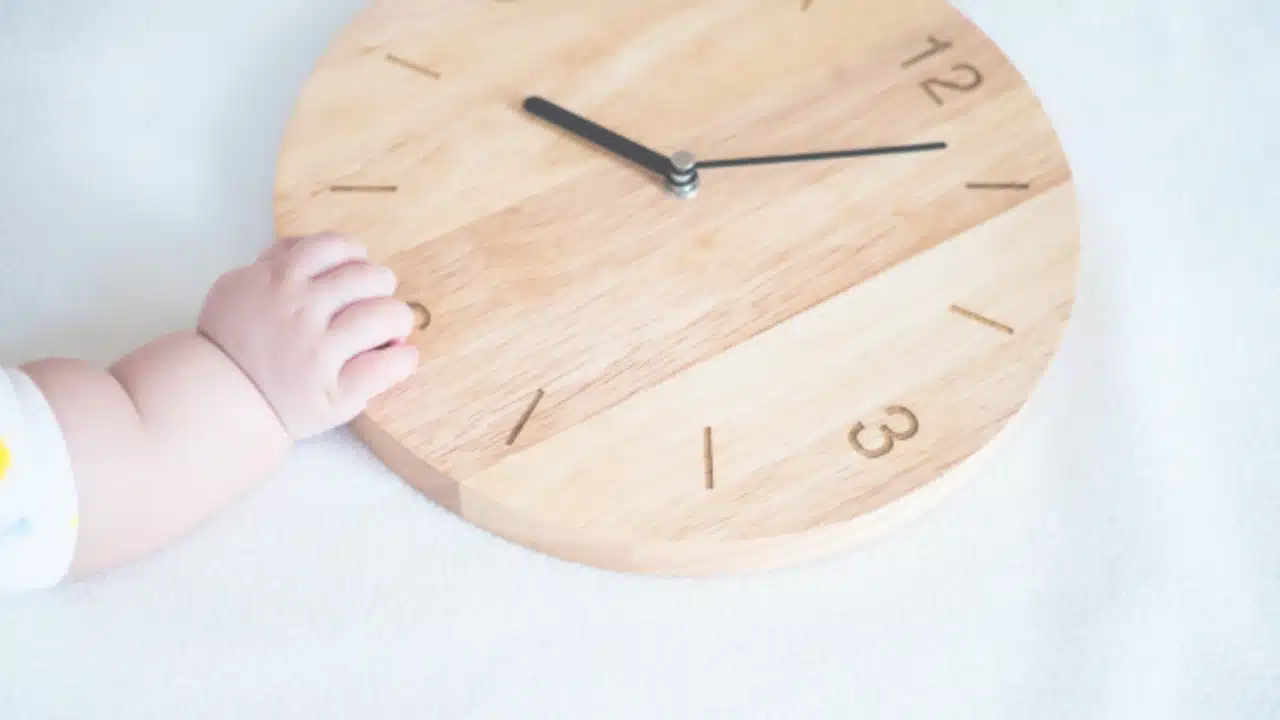
how to help your child adjust to the clock change – spring & autumn edition

Clock changes. They can be a real headache for families, can’t they? Even that single hour – forward or back – can throw everyone’s routine off track. While adults might muddle through after a day or two, for babies and young children, the disruption is often much bigger.
Why Do Clock Changes Affect Children So Much?
Unlike adults, little ones run on internal body clocks (circadian rhythms), not what the numbers say on your phone. So, when the clocks shift -whether we “spring forward” and lose an hour, or “fall back” and gain one -their bodies don’t just magically adjust overnight. The result? Early wake-ups, bedtime resistance, cranky moods, or naps that suddenly go haywire.
What Actually Happens?
Spring (Clocks Forward):
We lose an hour. Bedtime and wake-up feel earlier, and overtiredness can creep in.
Autumn (Clocks Back):
We gain an hour. Bedtime feels later, but kids may wake at their usual body clock time, making mornings feel even earlier.
Common Challenges:
• Early or disrupted wake-ups
• Mood swings or irritability
• Bedtime battles
• Nap resistance
• Changes in appetite and routine
How Can You Help Your Child Adjust?
1. The Gradual Shift (Great for Sensitive Sleepers)
Start adjusting bedtime by 15 minutes each night, 4–5 days before the clock change. Also, gradually shift meal and nap times. By the time the clocks change, their body clocks will be much closer to the new time.
Example for a 7:00 PM Bedtime:
Wednesday: 7:15 PM
Thursday: 7:30 PM
Friday: 7:45 PM
Saturday: 8:00 PM (before autumn change)
Or, shift earlier in spring.
2. The All-in-One Approach (For Flexible Kids)
Some children can handle a straight switch. Just move their bedtime by a full hour on the night before the change. If bedtime is usually 7:00 PM, make it 8:00 PM before the clocks go back in autumn, or 6:00 PM before clocks go forward in spring. Start the next day on the new time.spring.
3. Split the Difference (For Toddlers & Adaptable Sleepers)
Move bedtime by 30 minutes for two nights before the change. This can soften the impact without a big shock to the system.
Extra Tips for a Smooth Transition:
Stick to regular routines for meals, naps, and bedtime.
Limit screens in the hour before bed – blue light can delay sleepiness.
Make bedrooms dark, quiet, and cool; consider blackout curtains.
Get outside in the morning – natural light helps reset the body clock.
Be patient. It can take a few days for children to fully adapt.
Talk to older children about the change, so they know what to expect.
A Silver Lining for Early Risers
If your child is up at the crack of dawn, the spring clock change can actually help push wake-up later. Use this opportunity to reinforce a new, later routine!

Need More Support?

f you’re finding that clock changes throw your child’s sleep into chaos, or if sleep has been a struggle for a whilIe – sometimes a personalised approach is what makes all the difference. We offer gentle, evidence-based sleep coaching tailored to your family.
Ready for smoother nights and easier mornings?



